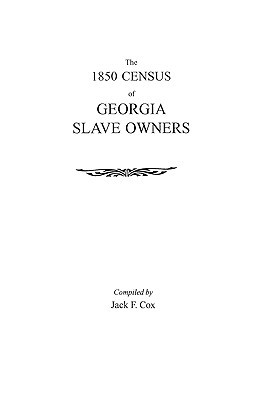
- We will send in 10–14 business days.
- Author: Jack F Cox
- Publisher: Genealogical Publishing Company
- ISBN-10: 0806348372
- ISBN-13: 9780806348377
- Format: 14 x 21.6 x 1.9 cm, softcover
- Language: English
- SAVE -10% with code: EXTRA
Reviews
Description
In 1850 and again in 1860, the U.S. government carried out a census of slave owners and their property. Transcribed by Mr. Cox, the 1850 U.S. slave census for Georgia is important for two reasons. First, some of the slave owners appearing here do not appear in the 1850 U.S. census of population for Georgia and are thus "restored" to the population of 1850. Second, and of considerable interest to historians, the transcription shows that less than 10 percent of the Georgia white population owned slaves in 1850. In fact, by far the largest number of slave owners were concentrated in Glynn County, a coastal county known for its rice production.
EXTRA 10 % discount with code: EXTRA
The promotion ends in 18d.09:41:34
The discount code is valid when purchasing from 10 €. Discounts do not stack.
- Author: Jack F Cox
- Publisher: Genealogical Publishing Company
- ISBN-10: 0806348372
- ISBN-13: 9780806348377
- Format: 14 x 21.6 x 1.9 cm, softcover
- Language: English English
In 1850 and again in 1860, the U.S. government carried out a census of slave owners and their property. Transcribed by Mr. Cox, the 1850 U.S. slave census for Georgia is important for two reasons. First, some of the slave owners appearing here do not appear in the 1850 U.S. census of population for Georgia and are thus "restored" to the population of 1850. Second, and of considerable interest to historians, the transcription shows that less than 10 percent of the Georgia white population owned slaves in 1850. In fact, by far the largest number of slave owners were concentrated in Glynn County, a coastal county known for its rice production.


Reviews